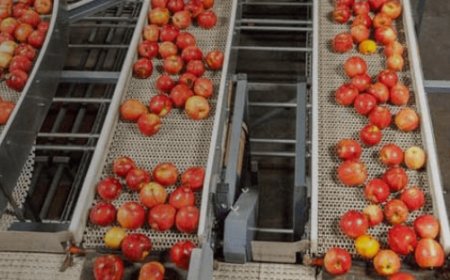How to Find Stuffed Chiles Rellenos in Fort Worth
How to Find Stuffed Chiles Rellenos in Fort Worth Fort Worth, Texas, is a city where tradition meets innovation—especially in its culinary landscape. While known for its cowboy heritage and barbecue joints, the city’s Mexican and Tex-Mex food scene has flourished over the past two decades, offering authentic flavors that rival those found in border towns and beyond. Among the most cherished dishes
How to Find Stuffed Chiles Rellenos in Fort Worth
Fort Worth, Texas, is a city where tradition meets innovation—especially in its culinary landscape. While known for its cowboy heritage and barbecue joints, the city’s Mexican and Tex-Mex food scene has flourished over the past two decades, offering authentic flavors that rival those found in border towns and beyond. Among the most cherished dishes in this rich tradition is the stuffed chile relleno: a roasted poblano pepper, gently stuffed with melted cheese (often queso fresco or Monterey Jack), lightly battered in egg, and fried to golden perfection. Served with tomato-based salsa or a light crema, it’s a dish that demands patience, precision, and passion to make—and to find.
But for visitors, newcomers, or even longtime residents, locating the best stuffed chile rellenos in Fort Worth isn’t always straightforward. Unlike tacos or nachos, which are ubiquitous, chiles rellenos are often handmade by skilled cooks who prepare them in small batches, sometimes only on weekends or during special events. They’re not always listed on digital menus. They may not appear in Google’s top results. And if you rely solely on tourist guides or generic “best Mexican food” lists, you might miss the hidden gems that serve the most authentic versions.
This guide is your definitive resource for discovering where to find truly exceptional stuffed chiles rellenos in Fort Worth. Whether you’re a food enthusiast seeking cultural depth, a traveler planning a culinary itinerary, or a local looking to reconnect with home-style cooking, this tutorial will lead you through the process—step by step—with practical advice, trusted resources, real examples, and insider tips that go beyond the surface.
Step-by-Step Guide
Step 1: Understand What Makes a True Chile Relleno
Before you begin your search, you must know what you’re looking for. A genuine stuffed chile relleno is not a fried pepper filled with ground beef and cheese, nor is it a breaded, deep-fried appetizer served with sour cream. Authentic chiles rellenos are:
- Made with roasted, peeled poblano peppers—not jalapeños or bell peppers.
- Stuffed with melting cheese, traditionally queso fresco, Oaxaca, or Monterey Jack, sometimes mixed with a touch of seasoned ground meat or picadillo.
- Covered in a light egg batter (not flour or breadcrumbs), which puffs slightly during frying and creates a delicate, airy crust.
- Fried in neutral oil at a precise temperature to avoid greasiness.
- Served with homemade tomato sauce, often simmered with garlic, onion, and a hint of cumin—not jarred salsa.
Recognizing these qualities helps you avoid imitations and focus on establishments that prioritize authenticity. Many restaurants label their dishes as “chile relleno” but serve a version that’s been mass-produced or altered for speed. Knowing the standard allows you to ask the right questions when you visit.
Step 2: Start with Local Food Communities
Online review platforms like Yelp and Google Maps are useful, but they often prioritize volume over authenticity. Instead, begin by tapping into local food communities that value cultural heritage.
Join Facebook groups such as “Fort Worth Foodies,” “Texas Mexican Food Lovers,” or “North Texas Tacos & Tamales.” These are active hubs where residents share personal discoveries—often posting photos of meals they’ve had at family-run taquerías or weekend pop-ups. Look for posts with phrases like “best chile relleno I’ve ever had,” “abuela’s recipe,” or “only on Saturdays.”
Reddit communities like r/FortWorth and r/TexasFood also offer candid recommendations. Search for threads titled “Where to find real chile rellenos in FW?” or browse recent posts tagged with “Mexican food.” Many locals will reply with names of places you won’t find on TripAdvisor.
Step 3: Search by Neighborhood, Not Just Cuisine
Fort Worth’s culinary gems are often clustered in specific neighborhoods with strong Mexican-American roots. Focus your search on:
- West 7th Street – A historic corridor with a mix of old-school taquerías and newer fusion spots.
- Southside on Lamar – Known for its vibrant Latino community and family-owned restaurants.
- Northside on Lamar – Home to generations of Mexican immigrants; many unassuming storefronts serve exceptional home-style cooking.
- Watauga – Just outside Fort Worth’s city limits, but a hotspot for authentic Mexican cuisine, including weekend chile rellenos.
- Southwest Fort Worth (near I-30 and Hulen) – A quiet area with several long-standing family restaurants that rarely advertise but have loyal followings.
Use Google Maps to search “Mexican restaurant” in each of these areas, then filter results by “Most Reviewed” and “Newest.” Look for places that have been open for 15+ years and have photos uploaded by users showing whole chile rellenos on plates—not just tacos or burritos.
Step 4: Call Ahead—Don’t Rely on Menus
One of the most overlooked but critical steps: call the restaurant. Many places that serve authentic chiles rellenos don’t list them on their online menus because they’re made to order, only on certain days, or in limited quantities.
When you call, ask: “Do you make fresh chiles rellenos by hand? Are they available today or this weekend?” Avoid asking, “Do you have chile rellenos?”—this often triggers a yes from staff who don’t understand the difference between a relleno and a stuffed pepper appetizer.
Ask follow-up questions: “Is the pepper roasted and peeled by hand?” “What kind of cheese do you use?” “Is the batter made with eggs only?” If the person hesitates, gives a vague answer, or says “we fry them every day,” they likely don’t make them traditionally.
Conversely, if they say, “Yes, we make them Saturdays and Sundays only—using poblano peppers from the market—and we serve them with our abuela’s tomato sauce,” you’ve found a contender.
Step 5: Visit During Peak Hours for Authentic Service
Authentic chile rellenos are labor-intensive. They require roasting peppers, preparing batter, frying in small batches, and making sauce from scratch. Most places that do this well operate on a limited schedule.
Visit on weekends—especially Saturday lunch or Sunday dinner—when family-run kitchens are fully staffed. Avoid weekdays unless the restaurant explicitly states they serve them daily. Many establishments that make chiles rellenos on weekends only do so because it’s when they have the most hands available and the highest demand from regulars.
Also, arrive early. Because these dishes are made fresh, they often sell out by mid-afternoon. If you arrive after 2:00 p.m. on a Saturday and the server says, “We’re out,” don’t assume they’re closed—they simply ran out of peppers and batter.
Step 6: Look for Signs of Homemade Preparation
When you arrive, observe the kitchen environment. Authentic chile rellenos are made with care, not speed. Look for:
- Whole dried and fresh poblanos visible in the kitchen or displayed near the counter.
- Large pots of simmering tomato sauce with visible chunks of onion and garlic.
- Staff wearing aprons and handling ingredients with care—not rushing.
- Handwritten signs on the wall: “Chiles Rellenos: Sábados y Domingos” or “Hecho en Casa.”
- Customers who appear to be regulars—often older patrons who come weekly.
These are subtle but reliable indicators that the kitchen values tradition over efficiency.
Step 7: Ask for Recommendations from Staff
Once you’ve found a place that seems authentic, ask the server or cook: “Where else in Fort Worth do you go for chile rellenos?”
Staff at family-run restaurants often have personal connections with other cooks. They may mention a cousin’s place in Arlington, a market in Grand Prairie, or a Sunday-only stand at a local fiesta. These referrals are gold—they come from insiders who care about quality, not marketing.
Don’t be surprised if they say, “My mom makes the best ones, but she doesn’t have a restaurant—she cooks for neighbors on Sundays.” These are the stories that lead to the most memorable meals.
Step 8: Attend Cultural Events and Festivals
Fort Worth hosts numerous cultural festivals throughout the year that celebrate Mexican heritage. These are prime opportunities to sample authentic chiles rellenos made by home cooks, community groups, or regional chefs.
Key events to attend:
- Fort Worth Mexican Fiesta – Held annually in May at the Cultural District, featuring booths from local families serving traditional dishes.
- El Día de los Muertos Celebrations – Often hosted at the Latino Cultural Center, where food vendors prepare festive dishes, including chiles rellenos.
- West 7th Street Street Fairs – Occasional weekend events feature pop-up kitchens from long-standing Mexican families.
- Local church bazaars – Many Hispanic congregations host fundraising dinners with homemade meals. Check parish bulletins or Facebook pages for events.
At these events, you’ll often find chiles rellenos made with recipes passed down for generations—sometimes with secret ingredients like a touch of epazote in the sauce or a sprinkle of ground anise in the batter.
Step 9: Document and Cross-Reference Your Findings
Keep a personal log of every place you visit. Note:
- Restaurant name and address
- Day and time visited
- Price of the dish
- Appearance of the chile (color, texture, batter thickness)
- Taste profile (cheese melt, sauce acidity, pepper heat)
- Staff interaction and atmosphere
- Whether you’d return
Over time, patterns emerge. You’ll notice that certain restaurants consistently receive praise from multiple locals, or that a particular family’s recipe appears at three different locations. Cross-referencing your notes helps you identify the true standouts.
Step 10: Build Relationships and Become a Regular
Authentic cuisine thrives on trust. Once you find a place that serves exceptional chiles rellenos, become a regular. Greet the staff by name. Learn their story. Ask about their recipe. Offer compliments sincerely.
Many cooks will begin to save you a plate on busy days, offer you a taste of their sauce, or even invite you to come early on weekends when they’re preparing the peppers. These relationships are how the best food in Fort Worth is preserved—not through advertising, but through community.
Best Practices
Practice 1: Prioritize Authenticity Over Popularity
Don’t assume the restaurant with the most Instagram likes serves the best chile relleno. Many viral spots focus on presentation over tradition. A beautifully plated dish with edible flowers and artisanal salsa may look stunning, but if the pepper is under-roasted or the cheese is pre-shredded, it’s not authentic. Prioritize places where the food is made with care, not just styled for photos.
Practice 2: Respect Seasonal Availability
Poblano peppers are seasonal. They’re at their peak from late summer through early fall. During winter, some restaurants substitute with bell peppers or frozen poblanos—neither of which deliver the same flavor or texture. If you’re seeking the best version, visit between August and October. Ask: “Are these fresh poblanos?” If they say yes and smile, you’re in good hands.
Practice 3: Avoid Chains and Franchises
While chains like El Charro, Mi Tierra, or even Taco Bell may list “chile relleno” on their menu, they rarely prepare it authentically. These are standardized, mass-produced versions that lack the nuance of handmade dishes. Stick to independently owned establishments with a clear cultural lineage.
Practice 4: Learn Basic Spanish Food Terms
Knowing a few phrases can open doors:
- Chile relleno – Stuffed pepper
- Pimiento poblano – Poblano pepper
- Hecho en casa – Made at home
- De la abuela – Grandma’s recipe
- De hoy – Made today
Using these terms shows respect and signals that you understand the dish’s cultural roots. Staff are more likely to go out of their way to accommodate you.
Practice 5: Bring Cash
Many small, family-run restaurants in Fort Worth still operate on a cash-only basis. Even if they accept cards online, their in-house systems may not be updated. Always carry $20–$50 in small bills. This ensures you can order without delay and often earns you better service.
Practice 6: Don’t Rush the Experience
Chiles rellenos are meant to be savored. Eat slowly. Let the cheese cool slightly before biting—burnt cheese ruins the experience. Sip the sauce with a spoon. Notice how the pepper’s mild heat lingers. This isn’t fast food. It’s a ritual.
Practice 7: Share Your Discoveries Responsibly
If you find a hidden gem, share it—but respectfully. Avoid posting exact locations on viral social media posts that could lead to overcrowding. Instead, recommend it to friends or leave a thoughtful review on Google that highlights the cooking method, not just the taste. Protecting these places ensures they remain accessible to the community that created them.
Tools and Resources
Google Maps with Advanced Filters
Use Google Maps to search “Mexican restaurant Fort Worth” and then apply filters:
- “Open Now” – to see which are currently serving
- “Dine-in” – to avoid takeout-only spots
- “Highly Rated” – 4.7 stars and above
- “Photos” – look for user-uploaded images of whole chiles on plates
Sort by “Newest Reviews” to find recent mentions of chiles rellenos. If someone wrote a review in the last 30 days saying, “Had the best chile relleno here—perfectly roasted pepper,” it’s a strong signal.
Yelp Advanced Search
On Yelp, use the “Food” filter and select “Mexican.” Then type “chile relleno” into the search bar within the results. This will show only restaurants where the dish has been mentioned in reviews. Read the full reviews—not just star ratings. Look for phrases like “not like the ones at chain restaurants” or “tasted just like my mom makes.”
Facebook Groups
Join these active local groups:
- Fort Worth Foodies
- North Texas Mexican Food Enthusiasts
- Fort Worth Locals Only
- Tex-Mex and Beyond (TX)
Post a simple question: “Looking for the most authentic homemade chile relleno in Fort Worth—any hidden spots?” You’ll often get 10–20 replies within hours.
Local Food Blogs and Podcasts
These resources offer in-depth, curated recommendations:
- Fort Worth Food & Drink – A blog with monthly features on family-run kitchens.
- The Texas Table – A podcast that interviews chefs and home cooks about regional dishes.
- Latino Foodways of North Texas – A digital archive documenting traditional recipes and their origins.
Search their archives for “chile relleno.” These sources often include interviews with cooks and photos of the preparation process.
Local Markets and Grocery Stores
Visit Mexican grocery stores like:
- El Super – 4201 W. Lancaster Ave, Fort Worth
- La Michoacana Meat Market – 4801 S. Hulen St
- El Mercado de la Plaza – 3001 W. Lancaster Ave
Ask the staff: “Who makes the best chile rellenos in town?” Many vendors know local cooks who sell from home or operate weekend stands. Some even sell pre-roasted poblanos or frozen rellenos made by local families.
Library and Cultural Archives
The Fort Worth Public Library’s Mexican-American Collection includes oral histories and cookbooks from local families. Visit the History and Genealogy Department and ask for materials on “Tex-Mex cuisine” or “traditional Mexican dishes in Tarrant County.” You may find handwritten recipes or interviews with elders who recall where the best chiles rellenos were made in the 1950s and 60s.
Real Examples
Example 1: La Casa de la Abuela – Southside on Lamar
Located in a small, unmarked building with a red awning, La Casa de la Abuela has no website, no online menu, and no social media. But for over 30 years, the Hernández family has served chiles rellenos every Sunday from 11 a.m. to 3 p.m.
Each pepper is roasted over an open flame, peeled by hand, stuffed with Oaxaca cheese, dipped in a light egg batter made with fresh eggs from their own hens, and fried in corn oil. The sauce is a slow-simmered blend of Roma tomatoes, garlic, and a single dried ancho pepper.
Regulars arrive before 10 a.m. to ensure they get a plate. The cost is $12. Cash only. The owner, Doña Elena, is 82 and still prepares the batter herself. Locals say, “If you haven’t eaten here, you haven’t had a real chile relleno in Fort Worth.”
Example 2: El Rancho Viejo – Watauga
Though technically just outside Fort Worth, El Rancho Viejo is a pilgrimage site for chile relleno seekers. The restaurant is run by a family from Puebla, Mexico, who opened the business in 1987.
They use a secret batter recipe passed down from their grandfather: egg yolks, a pinch of cornstarch, and a splash of sparkling water. The result is a light, crisp crust that doesn’t overpower the pepper. They serve two rellenos per plate with a side of white rice and refried beans made with lard.
They don’t advertise. But their reputation is so strong that food writers from Austin and Dallas have written about them. The dish sells out by noon on weekends. Arrive early. Ask for “el plato de la abuela”—it’s the same recipe they’ve served since day one.
Example 3: The Sunday Stand at San Jose Church
Every third Sunday of the month, parishioners from San Jose Catholic Church in Southwest Fort Worth set up a food stand in the parking lot. Proceeds go to the church’s youth program.
One woman, Rosalinda, has been making chiles rellenos for 45 years. Her recipe includes a hint of ground cumin in the cheese filling and a drizzle of crema made with sour cream and lime. She uses poblano peppers grown by her brother in a small plot near Weatherford.
She sells 15–20 plates each time. No sign. No menu. Just a folding table and a chalkboard that says, “Chiles Rellenos – $10.” If you ask her how she learned to make them, she’ll smile and say, “From my mother. And she learned from hers.”
Example 4: El Sabor de México – West 7th Street
This restaurant, opened in 1998, is one of the few in Fort Worth that lists chiles rellenos on its online menu. But what sets it apart is transparency: their website includes a short video showing the entire process—from roasting the peppers to plating the dish.
The owner, Carlos, studied under a chef in Guadalajara. He insists on using only fresh, never frozen, poblanos. He makes his batter daily and never uses pre-shredded cheese. His sauce includes a single dried pasilla pepper for depth.
He’s also one of the few who offers a vegetarian version with mushroom and spinach filling. He says, “The pepper is the star. The filling should support it, not hide it.”
FAQs
Can I find chile rellenos on a weekday in Fort Worth?
It’s rare. Most authentic versions are made on weekends when families have more time and staff. Some restaurants, like El Sabor de México, offer them daily, but they’re the exception. Always call ahead.
Are frozen or pre-made chile rellenos worth trying?
Not for the authentic experience. Frozen versions are often soggy, over-battered, and lack the fresh flavor of roasted poblanos. Save them for a quick meal—but don’t confuse them with the real thing.
What’s the difference between chile relleno and chile en nogada?
Chile relleno is fried and served with tomato sauce. Chile en nogada is a Pueblan specialty stuffed with meat and fruit, covered in a walnut cream sauce, and topped with pomegranate seeds. It’s typically served in late summer during Mexican Independence celebrations. They’re different dishes entirely.
Do any Fort Worth restaurants offer vegan chile rellenos?
Yes, but sparingly. El Sabor de México and a few newer vegan-friendly taquerías offer plant-based versions using jackfruit or mushroom fillings. The batter is often made without eggs. Ask if the cheese substitute is dairy-free.
How much should I expect to pay for a chile relleno?
Prices range from $10–$18. If it’s under $8, it’s likely mass-produced. If it’s over $20, you’re likely paying for ambiance. $12–$15 is the sweet spot for authentic, handmade rellenos.
Can I order chile rellenos for delivery?
Most authentic places don’t deliver because the batter gets soggy. If you see them on Uber Eats or DoorDash, they’re likely pre-made and frozen. For the best experience, dine in or pick up.
What’s the best time of year to seek out chile rellenos in Fort Worth?
August through October is ideal. That’s when poblano peppers are in season and at their peak flavor. Winter versions may use substitutes and lack the same depth.
Is it okay to ask the chef how they make their chile rellenos?
Yes—and many will be honored to share. Use respectful language: “I’ve been searching for the best chile relleno in Fort Worth. Could you tell me how you prepare yours?” Most cooks love talking about their craft.
Conclusion
Finding the best stuffed chile rellenos in Fort Worth isn’t about checking off a list. It’s about embarking on a journey—one that connects you with the people, traditions, and stories behind the food. The dish itself is simple: pepper, cheese, egg, oil. But the meaning behind it is profound. It’s a symbol of resilience, family, and cultural pride.
The restaurants and home cooks who make them with care are not seeking fame. They’re not on Instagram. They don’t have marketing budgets. They’re simply doing what their mothers and grandmothers did—feeding their community with love.
By following the steps in this guide—listening to locals, calling ahead, visiting during peak hours, respecting seasonal ingredients, and honoring the craft—you won’t just find a meal. You’ll find a piece of Fort Worth’s soul.
So put down the tourist map. Grab your wallet. Call ahead. Show up early. Ask questions. And when you take that first bite of a perfectly roasted, golden-brown chile relleno—crisp on the outside, molten within, bathed in rich tomato sauce—you’ll understand why this dish, and this city, are so deeply cherished.
The best chile relleno in Fort Worth isn’t the one with the most likes. It’s the one you find when you’re willing to look beyond the surface—and listen to the people who’ve been making it all along.

























